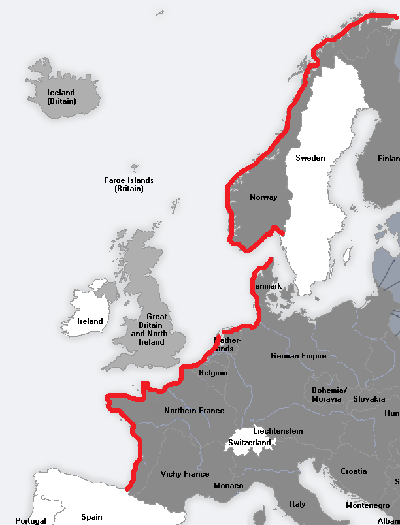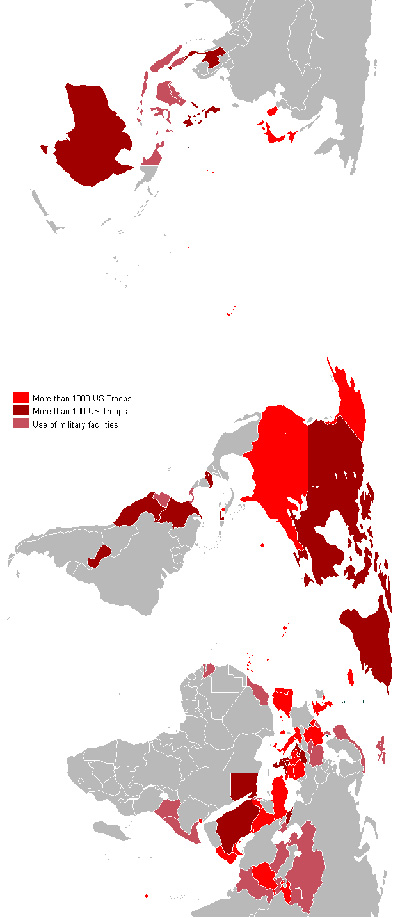
Aug '08 - Jun '10
A trip, a safari, an exploration, is an entity, different from all other journeys. It has a personality, temperament, individuality, uniqueness. A journey is a person in itself, no two are alike. And all plans, safeguards, policing and coercion are fruitless. We find after years of struggle that we do not take a trip, a trip takes us.
--John Steinbeck, Travels With Charley (quote courtesy of Taylor Medlin)
I can't tell you how many times I have sat down to write this post, or how many different angles I've tried to take. It's not procrastination; it's just, well, impossible to distill a year into any one representation. And why should I feel that obligation anyway? This fellowship, this dark grand tour, is an unshrinkwrapable package. It's open-ended. Still traveling, standing still.
View Soundscrapers Location in a larger map
The Branner is the key to a thousand doors. It was an amazing year. This is going to sound cheezy, but when people ask rhetorically "didn't you have the time of your life" I want to answer "no" because that time is right now, now that I get to walk forward with the things I witnessed in 2009 under my belt.
There are two things I can talk about, that come to mind immediately, when I think about the year. I'm thinking of two colossal military infrastructures which have and will continue to have a profound effect on me. One, the fortified crust of the European continent called the AtlantikWall, consisting of15,000 permanent fortifications (2 meters thick and above) and another 10,000-15,000 smaller bunkers. They were largely built in a period of two years under Hitler's direction, spanning from the Spanish border with France to the northern tip of Norway. The second, a network of over 1000 American military bases, installations, and listening posts beyond the borders of the United States, stretching across all oceans and on every continent except Antarctica (though Air Force C-17 Globemasters fly there from the leased facilities at Harewood , New Zealand, which I visited)
To connect these two megastructures is not to make equal the tyranny of Hitler with the military-security-industrial complex of the United States. They are vastly different regimes as are the structures which embody them and conduct their power.  The AtlantikWall, built from 1942 to 1944. image from Wikimedia, my edits
The AtlantikWall, built from 1942 to 1944. image from Wikimedia, my edits
Looking at the architecture, there are productive ways to pull out similarities. For example, both megastructures are built as typologies, emerging from a norm, though more rigorously in the German case. It is worth noting that the AtlantikWall is not a wall, but a permeable string of fortified positions. Crawling over these bunkers this past summer, I was dumbfounded by the notion that the bunker I was exploring was not a single structure but rather an asperity of a colossal wall 4,500 km long. That brings up another similarity, that the architecture rests in an invisible projection of power. For the AtlantikWall, that was the propaganda of impenetrability. For US Bases, it is contextualism, from faux-Torii gates in Japan to Palladian façade proportions in Italy. Contextualism instantiates a false sense of belonging, useful both to those serving on the base and to the community without. image fromWikimedia commons, my edits
image fromWikimedia commons, my edits
The differences begin with the obvious. America's network of bases are not WWII fortifications or even bases in the cold war sense of containing missiles aimed at various targets (though some undoubtedly still do). Rather, lacking targets and directionality, they are more like springheads of a vast underground reservoir of military power. This reservoir is in theory designed to pop up instantly, anywhere on the globe where a conflict may arise. I don't have security clearance so I know little about the particulars, but what I do know, and what my project on the bases was about, is that we disguise or 'camouflage' our bases, partnering with the host nations in very interesting ways. One of my favorite "bases" that I visited is called Naval Support Activity at Souda Bay, Crete. It's not even called a station or a facility, but merely an "activity" that receives carriers and cruisers that call in. Of course it's much more than an activity with its oil reserves and forward operating capabilities should a conflict arise in North Africa or Israel. It's a base, for crying out loud, with a "galley" which I ate in. It is the foundation for a military boomtown. Yet the act of masking this base as an "activity" so as not to seem permanent and thereby provoke the anti-base movement in the neighboring towns is at the heart of the US worldwide basing strategy. I digress.
The two megastructures come from two distinct spatial paradigms. Hitler's wall is the final relic of warfare conducted by line-of-sight, claiming territory by physical occupation and establishing front lines. Hence, each bunker on the AtlantikWall is built for an incredibly specific purpose: to withstand a certain caliber of firepower, to stop an enemy advance from a particular direction at a particular range, even to allow a penetration into the "wall" of bunkers without giving up a foothold on the continent. The clusters of bunkers were called "resistance nests" because they only needed to hold back the inevitable amphibious invasion long enough before reinforcements arrived.
American bases, on the other hand, have unfortified edges, on the whole could care less what is in line-of-sight, and are built to very generic standards except when it comes to blast arcs from ammo stored on base. The standoff distance between buildings and roadways (either 10, 25, or 45 meters depending on building occupancy) is derived from a car bomb on a base in Saudi Arabia in 1996--this single event has produced a very recognizable urban space around the globe, more uniform than McDonalds. If there ever were a true Universal Building Code, it is written by the Department of Defense (see pg. 40 for standoff dist.). A military base is the ultimate Generic City.
But you see I haven't even begun with my real interest, which is not so much in the military-ness of these objects of power but the processes which transform them. How a farm field becomes a military base which then becomes a something else… Understanding the military nature is critical to imagining their post-military uses.
Perhaps this is sufficient evidence that the year cannot be summed up, but rather can only be expanded upon ad infinitum. In hopes of abridging the impossible, I will unabashedly give in to the more standard mode of a year-in-review , which is to make a list. Voila.
In 2009, I...
Visited 16 countries
Lost one passport
Boarded 51 airplanes
Missed zero flights
Flew 85,282 miles
Snatched 22 airplane safety cards
Inspected 376 bunkers including 282 on the AtlantikWall (less than 1% of the total)
Accessed 29 US military bases and installations (18 on foreign soil, about 2% of the total)
Walked around the edges of 14 more bases that I didn't get into.
Visited 35 cemeteries
Explored 27 former US bases/installations
Recorded 71 hours, 54 minutes and 15.6 seconds of sound
Filled 16 notebooks and sketchbooks
Bought and wore 79 T-shirts as local camouflage
Hitched 15 rides
Wrote 72 postcards to my wife
And probably beating the odds, zero arrests!
The year was a lot of work. But every soldier needs some R&R. How about those highlights?
January: sipping a Cuba libre in the garden of the Hotel Nacional
February: soaking up steam and wiping off the city grit in a jimjilbang (public bath house) in Seoul
March: a night of drinking/research with sailors at The Morrigan's, an Irish pub outside Yokosuka Naval Base
April: being a guest at a giant Okinawan family picnic celebrating Kanbutsu-e, the Buddha's birthday
May: walking the streets of old San Juan
June: kickin' it in Marfa, Texas with the locals at Jett's Grill
July: the last night in Sydney… man, those Aussies can drink.
August: high tea with scones outside the Canterbury Cathedral, so English
September: Mussels in wine sauce cooked over a campfire next to a bunker in St. Malo, France
October: A concert at Hans Scharoun's Berlin Philharmonic
November: midnight snorkeling in Tumon Bay, Guam
December: being done
And finally, this grand tour was made possible by… an enormous list of people. There were so many people I met along the way who were generous with their time, not the least of whom were the kind folks on the bases I visited. A big thank you to the professors at Berkeley for their advice and encouragement. Faculty at other universities and professionals around the world also assisted with the project. I owe thanks to people who I hitched rides with, people whose couches I surfed, and random strangers who helped me on my way. The Urban Islands workshop in Sydney was a great moment, so thank you to the organizers, participants, and Geoff Manaugh for making that happen. My fellow Branner travelers Nicolette and Taylor have been awesome to bounce ideas off of and inspiring with their own wide trajectories. And thank you Archinect--plus you, the reader, for giving me the forum to write this, for your tips, ideas, feedback, or just anonymously reading.
I feel like I'm ending something prematurely. This blog isn't done, nor have I finished my business with the architecture of war. It's really just beginning. 2009 was a dream from which, in 2010, I have just awoken.



3 Comments
Nick,
Reading your blog and listening to the sounds over the last year has been a pleasure. I am glad that you feel that the success of your journey last year will only be exceeded by its culmination this year.
All the best.
d
thanks d!
incredible.
what more could i say?
to the future we go.
Block this user
Are you sure you want to block this user and hide all related comments throughout the site?
Archinect
This is your first comment on Archinect. Your comment will be visible once approved.